FEATURES|THEMES|Philosophy and Buddhist Studies
Expanding Buddhist Scholarship Through Pali Studies: An Interview with Aleix Ruiz Falqués
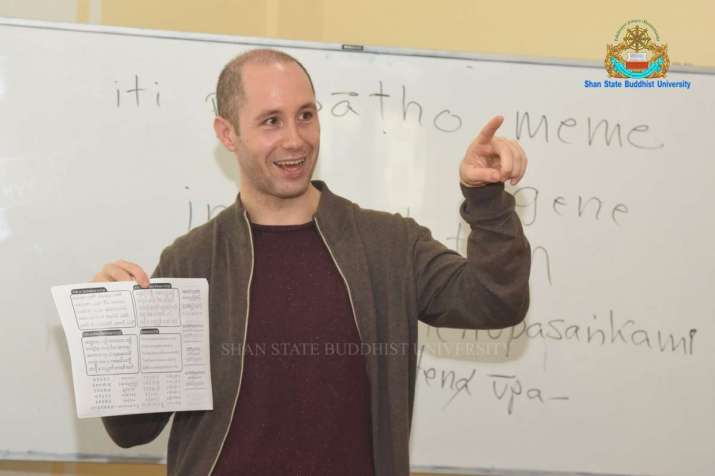 From facebook.com
From facebook.comDr. Aleix Ruiz Falqués is a professor of Pali and an expert on the tradition of Burmese Pali grammarians. He is currently serving as a Pali lecturer and head of the Department of Pali and Languages at Shan State Buddhist University in Taunggyi, Myanmar. He is also directing several doctorate-level research projects and translating texts from Pali and Sanskrit into Spanish and English.
Born in Sant Feliu de Codines, Barcelona, in 1982, Ruiz holds a master’s degree in ancient languages and cultures (University of Barcelona) and an MA Sanskrit (University of Pune, India). In 2016, he completed a PhD program in Pali studies at the University of Cambridge, which was partially funded by a grant from The Robert H. N. Ho Family Foundation Dissertation Fellowships in Buddhist Studies (2014). In this interview, with Buddhistdoor Global and Buddhistdoor en Español, Dr. Ruiz talks about his career and current projects.
Buddhistdoor Global/Buddhistdoor en Español: Tell us about your academic career. You studied classical philology at the University of Barcelona. What led you to specialize in Pali and Sanskrit? What has been your training in these languages?
Aleix Ruiz Falqués: I have been interested in the Classical Indian tradition since my high school days, but I had no training at all in Indian languages. I did know about Greek and Latin, especially some authors like Homer and Plato, so I studied classics. Even before completing my degree, I decided to go to India to study Sanskrit. I had taken an introductory course in Sanskrit at the University of Barcelona, but that was not much and I thought it would be a good idea to simply move to India, travel a little, learn Sanskrit, and avoid getting stuck at my first university.
I worked for a year doing menial jobs in Barcelona to save money before going to India. At that time I did not know anything about Pali except that it was a Middle Indic language of the Indo-European family. Once in Pune, in 2006, I decided to enroll in an MA in Sanskrit and there itself I started learning Pali. That was my training in languages. Later on, I went back to Barcelona and did a second MA, writing a dissertation on Pali literature. Next, I went to Cambridge. There I was mentored by the late Ole Holten Pind, who was an extraordinary Buddhologist and a kalyana-mitta (Pali: spiritual friend). I met Ole in 2010 and his guidance was critical. I have been trying to improve my skills since then, learning from many people.
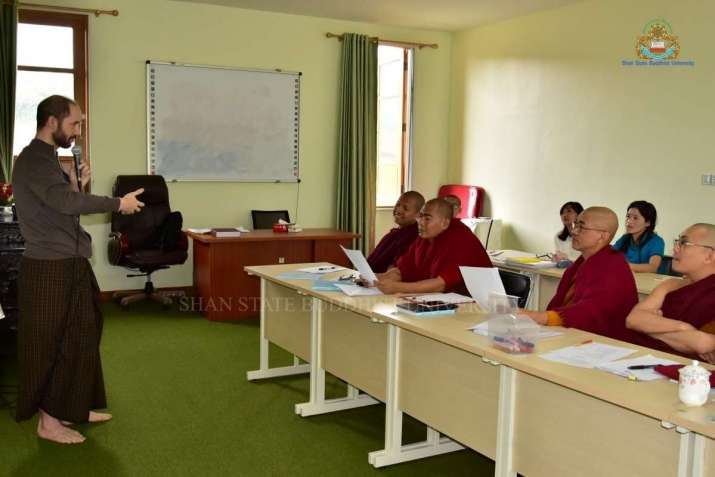 From facebook.com
From facebook.comBDG/BDE: You are presently a Pali teacher in Myanmar. Can you tell us how you came to this position and what projects preceded it?
AFR: In 2017, I was invited to a conference on “Translations of the Tipitaka” in Yangon, organised by Shan State Buddhist University (SSBU). At that time it was in its inception stage, without a fully running campus. The conference took place at the University of Yangon. Since then I have collaborated with SSBU and in 2018 the opportunity came to take the commitment to a higher level, and I moved to the campus in Taunggyi. Since 2018, SSBU has been running as a small but fully functional university.
My position as Pali lecturer and head of the department is thanks to our rector, Sayadaw Ven. Khammai Dhammasami. I am very grateful for his trust and I try to do the best I can. I had been in touch with Ven. Dhammasami since we met at a conference in London in 2016. At that time, I was at Cambridge and he was at Oxford. We had similar interests and we saw the development of Pali studies in a similar way. We cherish the values of the traditional system, and we also appreciate the advantages of the modern philological-historical approach (I was coming from Cambridge, from the same department where Professor K. R. Norman had taught). We believe these two approaches are not only compatible, but actually enhance one another. That is the culture that inspires our work at SSBU. I guess the fact that I specialise in Pali literature from Myanmar has also played an important role in this process. My wife Anuja, who is a Sanskrit scholar, was also happy to join the university, and that helped, of course.
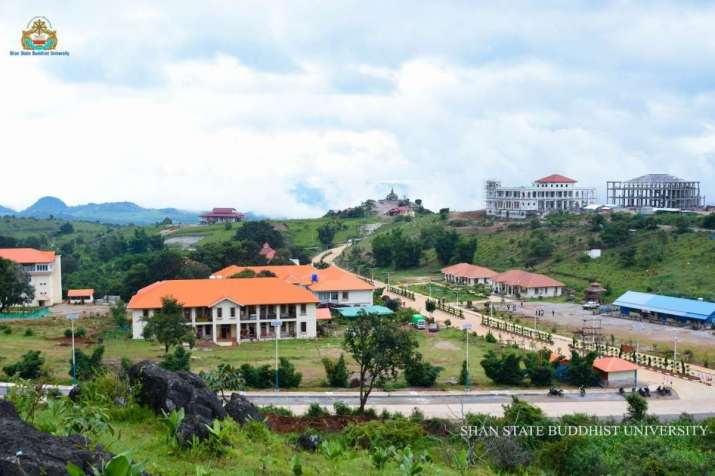 From facebook.com
From facebook.comBDG/BDE: How has COVID-19 affected your teaching?
ARF: I think in the same way it has affected everyone else. But the pandemic caught me in Spain, and my son was born one week after the lockdown was declared. Since then, we have not been able to return to Myanmar. We teach online, which as everyone knows has some advantages and some disadvantages, but it was already being implemented to some extent at SSBU due to our international network of lecturers, researchers, and students. The problem for me has been the fact that I am stuck in my own country and I would prefer to be at SSBU campus in Taunggyi.
BDG/BDE: What do you consider to be the easier and more effective teaching process for Pali and Sanskrit?
ARF: I think at the end of the day it all depends on the motivation of the student and knowing why one studies a language such as Pali or Sanskrit. One cannot simply learn "Sanskrit." Only some pandits know "Sanskrit" and can read anything from Veda to Navya Nyaya. Generally, one specialises in one branch of the literature, with its specific terminology and style. One should be clear about the goal.
Of course, initially one needs to learn the basic grammar, but one should not become obsessed with being flawless in grammar before anything else. If a person is interested, say, in reading the Abhidharmakosabhasya, I would recommend finding a suitable teacher and plunging into the text; learn the style, learn by reading, by reciting, by memorising, by asking questions to your teacher. The bhasya style has its own features, you do not need to know the whole of Sanskrit grammar. But if the goal is to become a well-rounded Sanskrit or Pali scholar (whatever that means), then, of course, it is fine to try to learn the grammar in abstract, though it could be the most boring and useless enterprise in the universe and one may end up forgetting half of it in a year and the other half in two years.
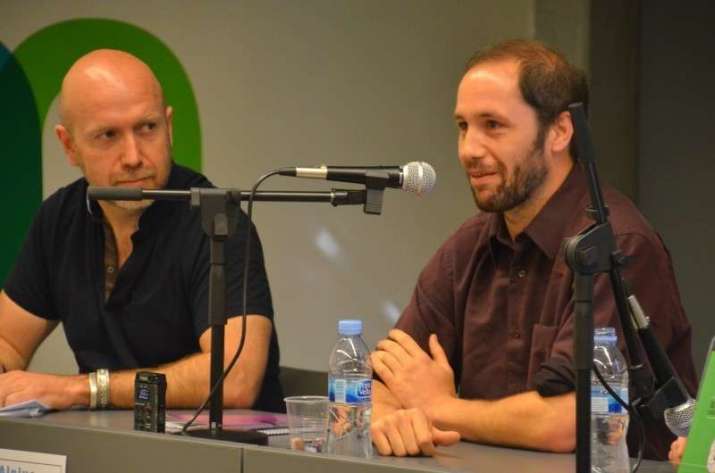 From facebook.com
From facebook.comBDG/BDE: Please describe for our readers what you consider to have been your main publications and the projects on which you have worked.
ARF: That is a difficult question because I do not have a great opinion of my publications. I need to improve a lot. Recently I published an article called “Purifying the Pātimokkha” in a journal called Buddhism, Law and Society (Vol. 4, 2019). My article discusses how traditional grammar played a role in the preservation, written and oral, of Vinaya texts such as the Patimokkha, the code of monastic rules. Another publication that is about to come out is titled “Boundaries and Domains: Understanding Optionality in Buddhappiya's Rūpasiddhi.” It is about the grammatical technique of Buddhappiya, a 12th century Pali scholar from South India, one of the greatest Pali grammarians of all time. In my article, I highlight the fact that his use of option markers is systematic. That goes against a very entrenched opinion that Pali grammarians were unsystematic in the use of option markers.
I have been working on a critical edition of a grammatical work written in Bagan around the 13th century, called the Mukhamattasara by Gunasagara. The text has never been edited, as far as I know. I am working with five manuscripts. It will be preceded by an introductory study in which I hope I can also make some small contribution in the field of Pali language and literature.
In December 2019, I gave a workshop on the Mukhamattasara in Pune, organised by my teacher Prof. Mahesh Deokar. I am also involved in another grammatical work called the Kārikā, written, again, in Bagan. I am doing that with Prof. Deokar and Prof. Dragomir Dimitrov. They are very knowledgeable and I feel fortunate to work with them.
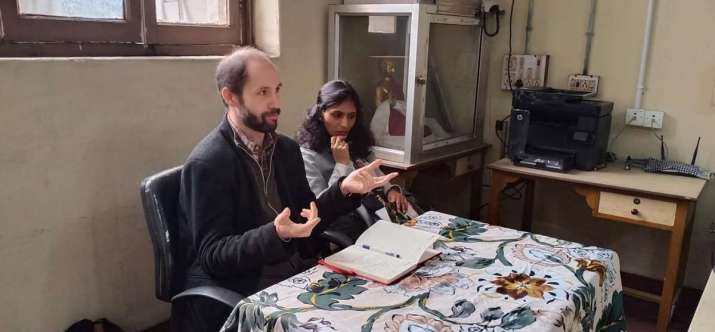 Giving a talk at the University of Calcutta, December 2019. Photo by Ujjwal Kumar
Giving a talk at the University of Calcutta, December 2019. Photo by Ujjwal KumarBDG/BDE: Nowadays, many researchers are working on Burmese Buddhism. What could be the reason? How would you evaluate your current research in this context?
ARF: I think it is a combination of factors. The country started "opening up" a decade or so ago. Academic trends and fashions also played a role. I was lucky that my interest in Buddhism in Myanmar coincided with a major shift in Indology (the discipline from which I come), namely, the exploration of Indic traditions beyond Sanskrit and India. There has been a growth of scholarly paradigms about the so-called “Indianization” of Southeast Asia. There is also that famous paper by Prof. Charles Hallisey, “Roads taken and not taken . . .” So in Cambridge my work was in the context of Indian studies, how, or to what extent Indian culture developed in terra incognita, so to say.
There is also a trend in Buddhist studies to revise traditional narratives about Theravada, and to focus on vernacular languages and medieval traditions as opposed to the received discourse based on the primacy of canonical Pali, the obsession for pristine origins and all things "early," and so on. Another factor is that academics are constantly looking for originality and visibility, so if you go to where no one has been you will probably say something original, even if you simply describe what you see. That is, I am afraid, my own case, although my initial interest in Myanmar had nothing to do with academics. I have two main motivations: one, I study medieval Pali grammars, which means "late" Indic grammars. Two, I study the early Pali tradition of Myanmar and Southeast Asia, so people studying the education system of Myanmar today could potentially be interested in what I have to say about Pali scholarship in Bagan. In theory, as an Indologist, I am late, but as a Myanmar scholar, I am early. In my humble opinion, however, we all live in the present, there is no other time, so we are all working on the same period, which is our own period.
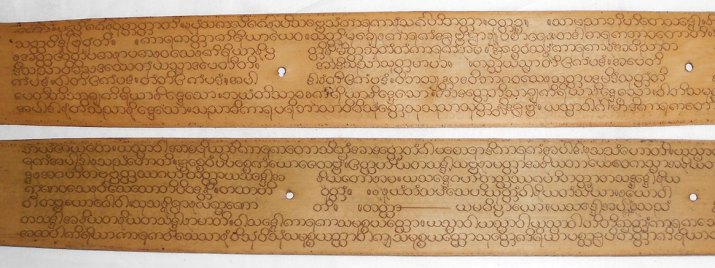 Fragment of a Pali manuscript of the Kaccayana Suttaniddesa, Thar Lay Library, Inle, Myanmar, 2012. Photo by Aleix Ruiz Falqués
Fragment of a Pali manuscript of the Kaccayana Suttaniddesa, Thar Lay Library, Inle, Myanmar, 2012. Photo by Aleix Ruiz FalquésSee more
Personal website of Aleix Ruiz Falqués
Aleix Ruiz Falqués (Ko Aung Naing) Facebook
Shan State Buddhist University
Shan State Buddhist University Facebook
Teachings: Instituto de Estudios Buddhistas Hispano
Member: Transnational Network of Theravada Studies
Related news from Buddhistdoor Global
Indian Archaeologists Resume Restoration of Pagodas in Bagan, Myanmar after COVID-19 Delay
Archaeological Survey of India Begins Restoring Five Buddhist Pagodas in Bagan, Myanmar
UNESCO Declares Myanmar’s Ancient Buddhist Temple City Bagan a World Heritage Site














